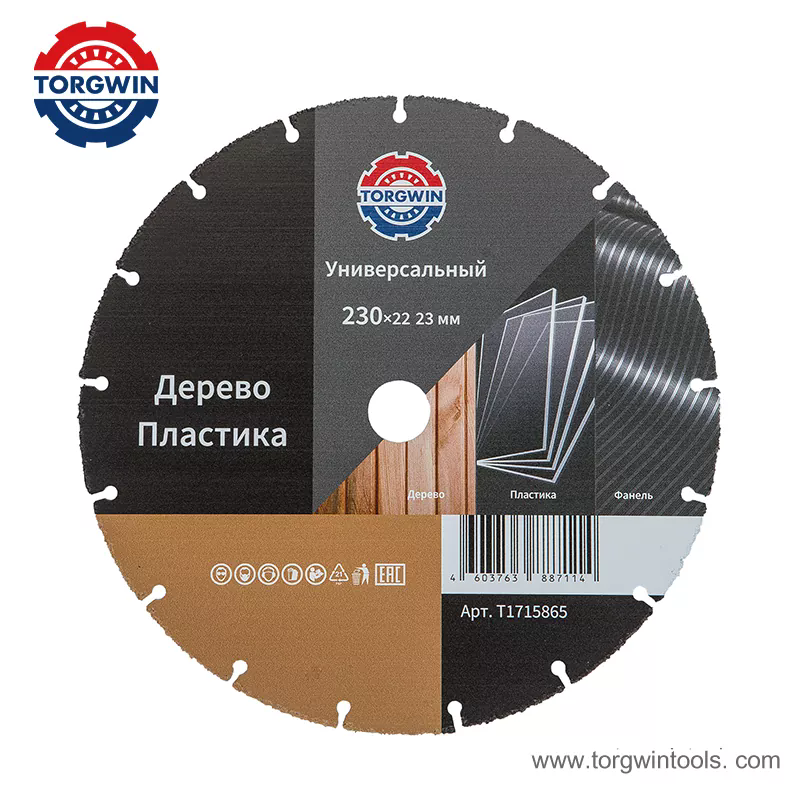Mastering Precision: The Advantages of Alloy Woodworking Saw Blades
2024-09-19
In the realm of woodworking, precision, efficiency, and durability are paramount. Whether you're a professional carpenter or a dedicated hobbyist, the quality of your tools can significantly impact your work. Among these tools, the alloy woodworking saw blade stands out as a superior choice for achieving clean cuts and maintaining a high level of craftsmanship. In this blog, we’ll explore the features, benefits, and applications of alloy woodworking saw blades, and why they should be a key component of your woodworking toolkit.
What is an Alloy Woodworking Saw Blade?
An alloy woodworking saw blade is a cutting tool designed for use with saws to cut through various types of wood. These blades are characterized by their use of high-performance alloys in their construction, which enhances their durability, sharpness, and overall effectiveness.
Key Components of Alloy Saw Blades:
1. Blade Material: Alloy saw blades are made from a combination of metals, typically including carbide or high-speed steel (HSS), which are known for their hardness and wear resistance.
2. Tooth Design: The tooth configuration of an alloy saw blade is carefully engineered to provide clean, precise cuts. Common designs include alternate top bevel (ATB), flat top grind (FTG), and combination tooth patterns.
3. Body Construction: The body of the saw blade is often made from high-strength steel or aluminum, providing stability and reducing vibration during operation.
Why Choose Alloy Woodworking Saw Blades?
1. Enhanced Durability
Alloy saw blades are renowned for their exceptional durability. The high-performance alloys used in their construction allow them to withstand significant wear and tear, making them ideal for extended use. This durability translates to a longer lifespan compared to standard blades, reducing the frequency of replacements and downtime.
2. Superior Cutting Performance
The sharpness and precision of alloy saw blades are second to none. The high-quality alloys ensure that the cutting edges remain sharp for longer, resulting in cleaner and more accurate cuts. This is crucial for achieving high-quality finishes in woodworking projects.
3. Reduced Vibration
The robust construction of alloy saw blades helps to minimize vibration during cutting. This stability contributes to smoother operation, improved cut quality, and less strain on the saw and operator.
4. Versatility
Alloy saw blades are versatile and can be used with various types of wood, including hardwoods, softwoods, and engineered wood products. They are also effective for cutting through laminated and veneered materials, making them a valuable tool for a wide range of woodworking applications.
5. Efficiency and Precision
The advanced design of alloy saw blades allows for efficient material removal and precise cuts. This efficiency enhances productivity and ensures that woodworking tasks are completed with a high level of accuracy.
Applications of Alloy Woodworking Saw Blades
1. Cabinet Making
In cabinet making, precision is key to achieving well-fitting joints and clean edges. Alloy saw blades are ideal for cutting cabinet components such as panels, doors, and shelves with accuracy and smoothness.
2. Furniture Construction
For furniture makers, alloy saw blades provide the sharpness and durability needed for cutting intricate designs and patterns in wood. The high-quality cuts ensure that furniture pieces fit together seamlessly and have a polished finish.
3. Woodworking Shops
In professional woodworking shops, alloy saw blades are essential for handling heavy-duty cutting tasks. They are used in table saws, miter saws, and radial arm saws to cut various types of wood and achieve consistent results.
4. Home Improvement Projects
For DIY enthusiasts and homeowners, alloy saw blades offer a reliable solution for home improvement projects. Whether building custom furniture, installing trim, or performing other woodworking tasks, these blades ensure that cuts are accurate and clean.
5. Custom Woodworking
In custom woodworking, where unique and precise cuts are often required, alloy saw blades are invaluable. Their ability to handle complex cuts and maintain sharpness makes them ideal for crafting bespoke wood pieces.
Tips for Maintaining Alloy Woodworking Saw Blades
1. Regular Cleaning
Keep your alloy saw blades clean to maintain their performance. Remove sawdust, resin, and other debris that may accumulate on the blade. Use a blade cleaning solution and a soft brush to clean the teeth and body of the blade.
2. Proper Storage
Store alloy saw blades in a dry, protected environment to prevent rust and damage. Use blade guards or protective cases to shield the blade from impacts and environmental factors.
3. Sharpening
Periodically check the sharpness of your saw blades and have them professionally sharpened when needed. Dull blades can cause rough cuts and increased strain on your saw.
4. Check Alignment
Ensure that the saw blade is properly aligned and mounted on your saw. Misalignment can lead to uneven cuts and increased wear on the blade.
Conclusion
Alloy woodworking saw blades are an excellent investment for anyone serious about woodworking. Their durability, precision, and efficiency make them a standout choice for a variety of applications, from cabinet making to custom woodworking projects. By choosing alloy saw blades, you can achieve high-quality cuts, enhance your productivity, and enjoy the benefits of a tool designed for performance and longevity.
Whether you're a professional woodworker or a DIY enthusiast, incorporating alloy saw blades into your toolkit can elevate the quality of your work and streamline your woodworking processes. Embrace the advantages of alloy technology and experience the difference it makes in your projects.



